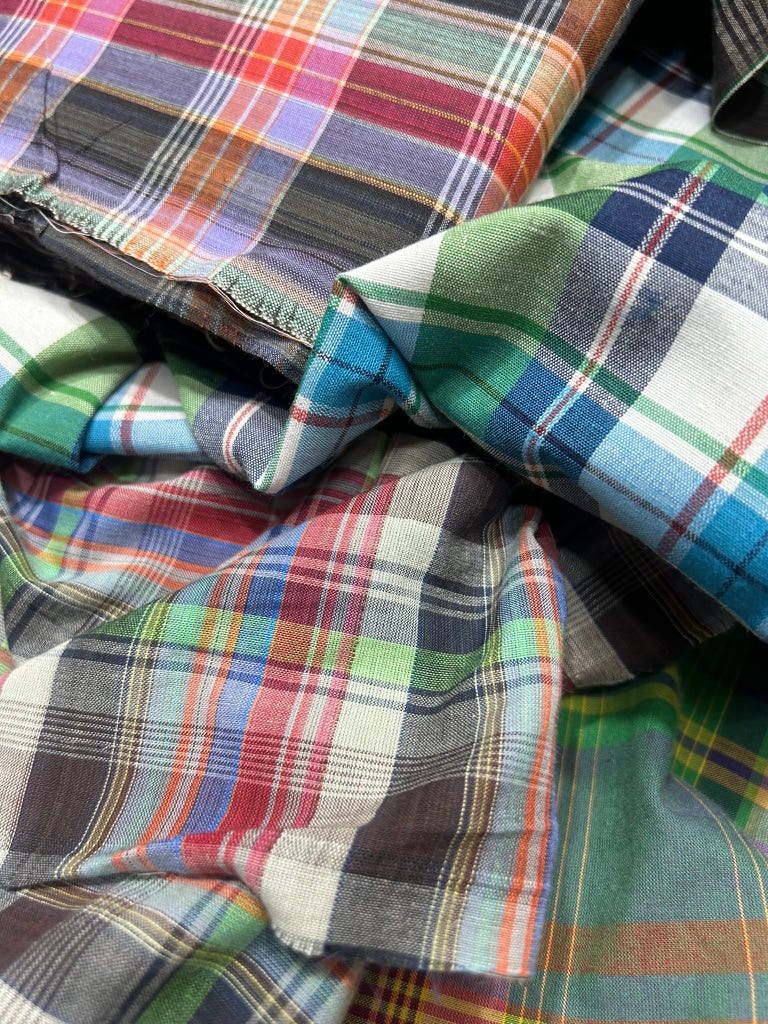More than Madras
Summer is in full swing and whatever you’re doing to mark the occasion should be done with a sense of style.
Ensuring that you’re doing so is a job for none other than Ishaan Jajodia, Clubland USA’s chief curmudgeon and dress code enforcer. As a matter of fact, Ishaan Jajodia’s endorsement for New York City mayor lies heavily in plans for enforcing a “whites only” rule for attire on New York City’s public tennis courts.
All jokes aside, we could all be better prepared to put our best shoes forward at the Club this summer. Yours truly brings Dispatches from Clubland.—LR
Mad for Madras
Our Summer Fashion Guide
We’ve shared a broad clubby attire, but now that summer’s in full swing, ‘tis the time to revisit the subject.
In my mind, summer means one thing: bring out the madras. I am so madras-crazy that I even hosted a madras-themed party on my birthday and sported a Madras tuxedo. Mr. Robinson chose the more subtle option of a seersucker suit topped off with a madras necktie.
But you might be wondering, what in the world is madras?
Madras, now called Chennai, is an Indian port city where the lightweight, handwoven cotton originated. Whilst Indian textiles have always enjoyed stellar reputations, dating back from the Roman world, and were traded throughout the world, it was in 1718 that the fabric first reached American shores, as a donation to Yale College.
It took almost a quarter of a millennium for madras to become a ubiquitous staple of club attire. In 1958, an enterprising Indian exporter struck a deal with William Jacobson, a buyer for Brooks Brothers and other American firms, to sell the iconic fabric to the firm that has dressed American presidents and statesmen for centuries. David Ogilvy, of the eponymous advertising firm, transformed madras into a sensation with the phrase "guaranteed to bleed”, which referred to the bleeding of the dyes in the fabric from washing in hot water. Clearly washing instructions had been lost on the 9,000 mile journey from India to the United States. What was once a working-class fabric in India acquired elite connotations in the Anglosphere.
Where madras gets its checks from is lost to the mysteries of time. One plausible theory, according to Deb German, is that the plaid-tartan-esque patterns were riffs on Scottish regimental attire, but there’s no way of knowing how true that is. Madras, whether in patches, or as a single loomed and dyed fabric, retains its own vibrancy of patterns and hand-loomed blemishes.
Madras is perfect for the summer: it is bright, colourful, and playful. The variety in madras helps break the monotony of pastels that enjoy their high-water mark in the summers, and careful dressers will seek out unusual patterns to stand out without really standing out.
That being said, however, madras is far from the only summer staple at clubs—though it is by far my favourite. Lest you fall afoul, though, continue reading on here. — IJ
Members Only
Grand Exit | Leonard Robinson
Smaller the Ball, Better the Sport | Ishaan Jajodia
Ask Yourself This Before Club Elections | Leonard Robinson
Joining your First Club | Ishaan Jajodia
Clubs are for Jesters | Ishaan Jajodia
Dispatches from Clubland
Famished in Charm City. Rumor has it that less than half of the private clubs in Baltimore offer a lunch option. Yes, the same Charm City that has brought crab cakes, Old Bay seasoning and Domino sugar only boasts a handful (at best) of clubs that’ll serve you a three-martini lunch. Don’t worry, Clubland USA is on it.
Trouble in paradise? No one in Clubland is envying the president of the Fisher Island Club, which effectively owns Fisher Island, the latest Miami enclave for the young and rich. The club’s dirty laundry, including attacks against club leadership, has been shared in the pages of the New York Post—without a paywall.


